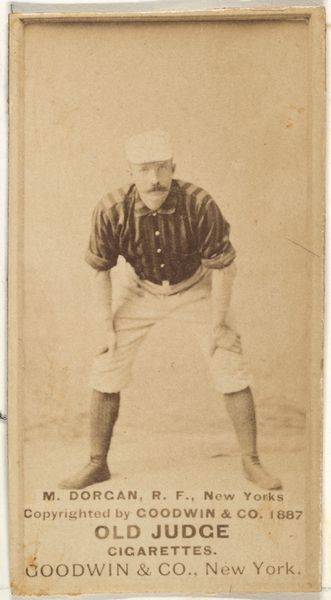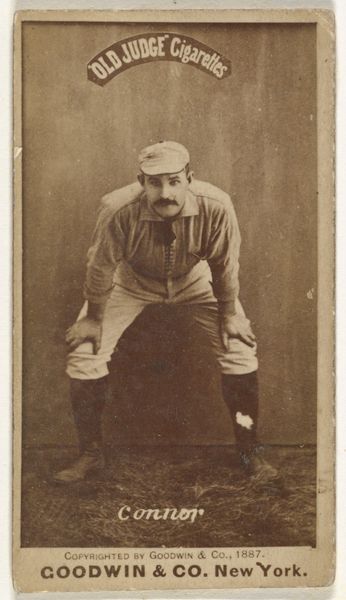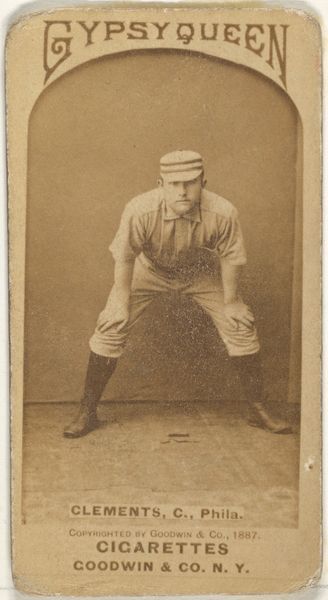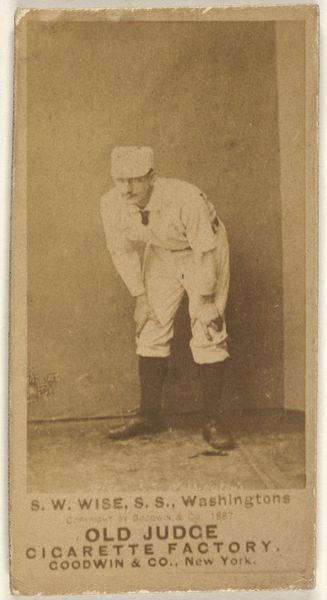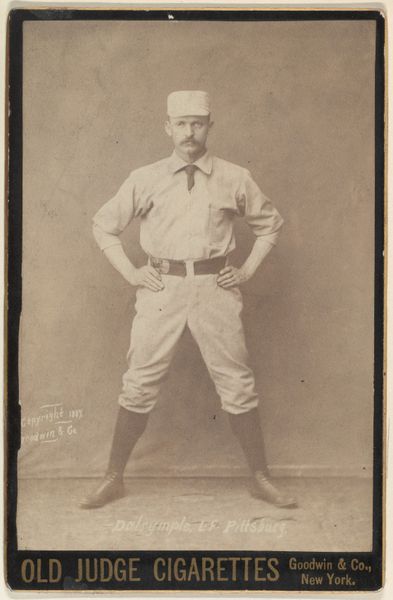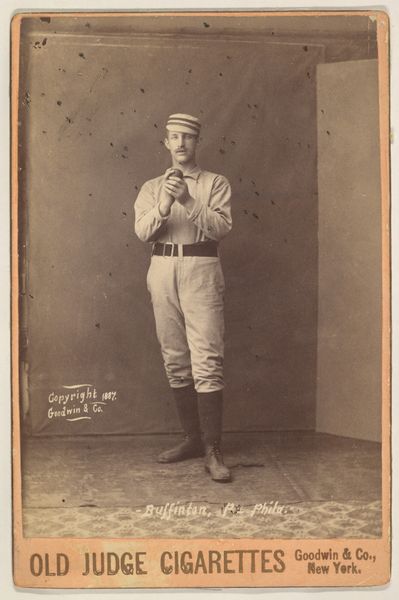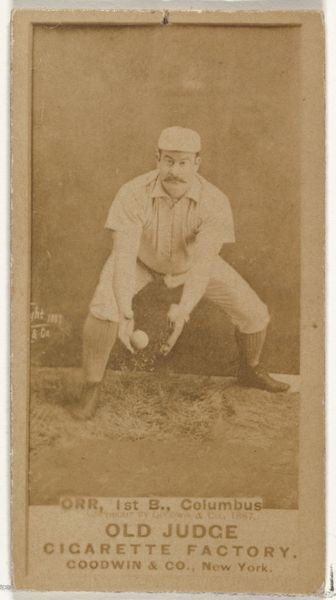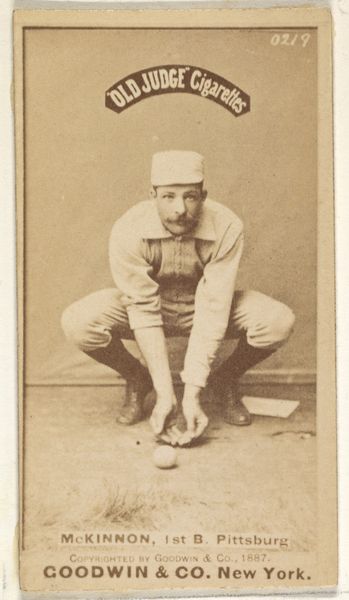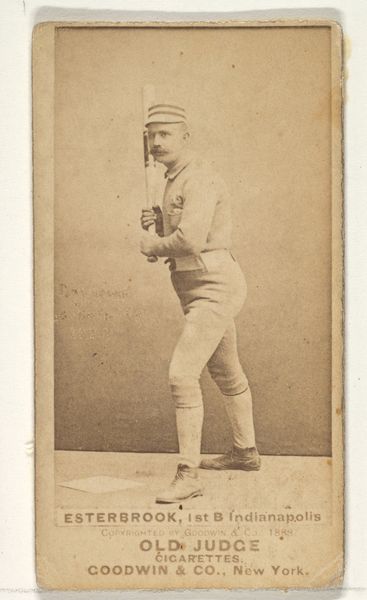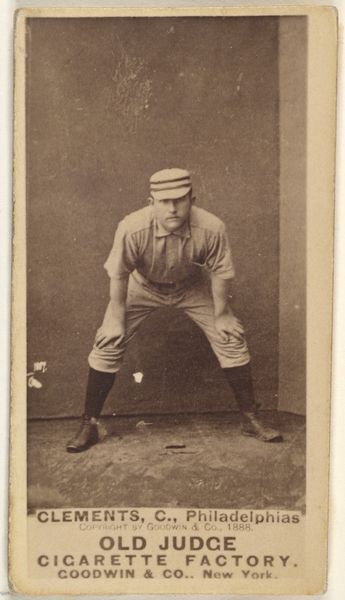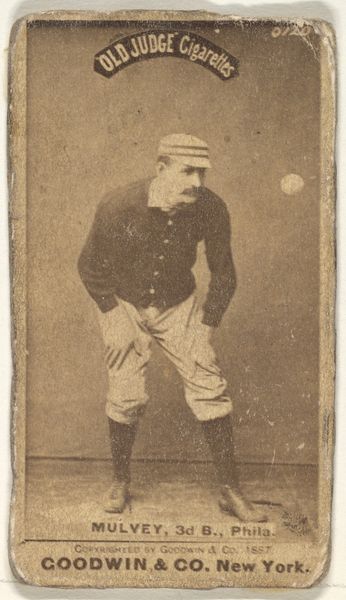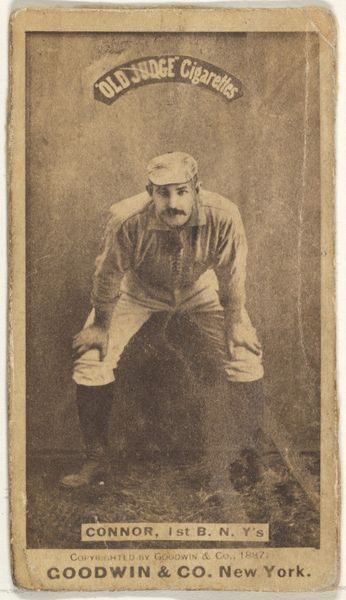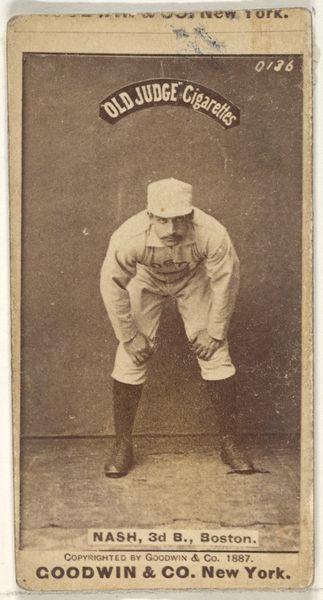
John Joseph "Joe" Gerhardt, from the Old Judge series (N172) for Old Judge Cigarettes 1887
0:00
0:00
drawing, print, photography
#
portrait
#
drawing
#
pictorialism
# print
#
baseball
#
photography
#
19th century
#
men
#
athlete
Dimensions: sheet: 2 11/16 x 1 3/8 in. (6.9 x 3.5 cm)
Copyright: Public Domain
Curator: The image before us is from Goodwin & Company, circa 1887. It's a photograph, presented as a print, titled "John Joseph 'Joe' Gerhardt, from the Old Judge series (N172) for Old Judge Cigarettes." Editor: Immediately striking. The sepia tone gives it a powerful sense of history, but the posture-- slightly crouched, hands on knees-- speaks of anticipation, doesn't it? Curator: Yes, quite. There’s a careful consideration of form here. Notice the symmetrical composition, the placement of his body almost centered within the frame, creates a balanced tableau, a formal almost sculptural presentation of this athletic figure. Editor: Absolutely, but let's not overlook that this wasn’t merely an artistic endeavor; this was also advertisement. These cards were included in cigarette packs. The fact that they are distributing images of mostly white male baseball players highlights the intersection of commercialism, sport, and a specific kind of masculine ideal in late 19th-century America. The advertisement is at the top of the baseball portrait. Curator: The semiotics are indeed layered. We see baseball celebrated alongside a product meant for mass consumption, it tells us so much about the era, particularly concerning the development of professional sport as a form of both spectacle and capitalist enterprise. Editor: And his gaze, although seemingly direct, doesn’t quite meet the viewer's eye, contributing to the air of distance and objectification. This contributes, perhaps inadvertently, to the culture of fandom. It highlights the commodification of an athlete. Curator: Well, I see it as capturing a sense of timelessness, and perhaps valorizing Joe as a representation of athleticism. We could analyze the composition indefinitely! Editor: Agreed! Thinking critically about historical objects encourages conversation about how popular imagery is deeply embedded in networks of production, ideology, and power. Curator: Very well put, It shows the power of visual material for analyzing structures that support contemporary life.
Comments
No comments
Be the first to comment and join the conversation on the ultimate creative platform.
